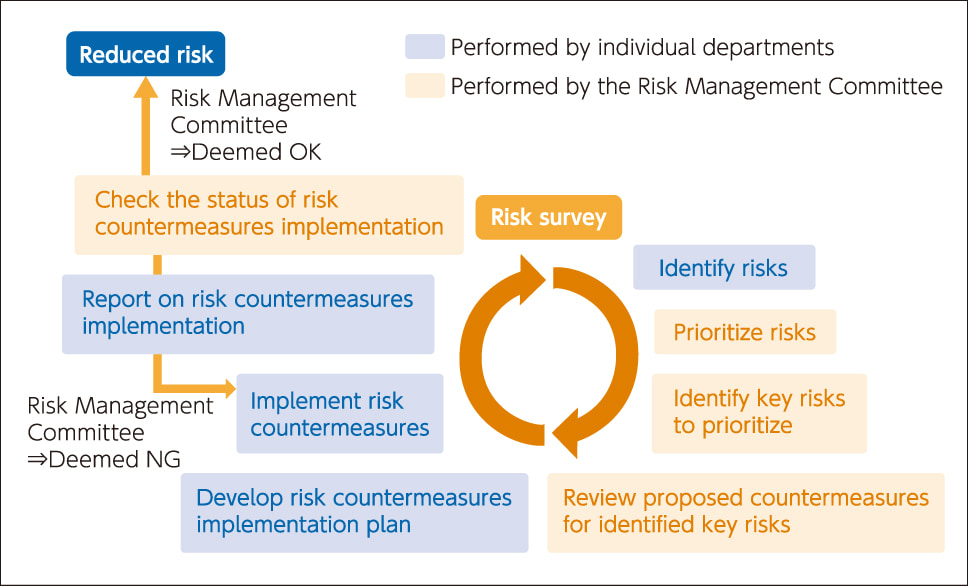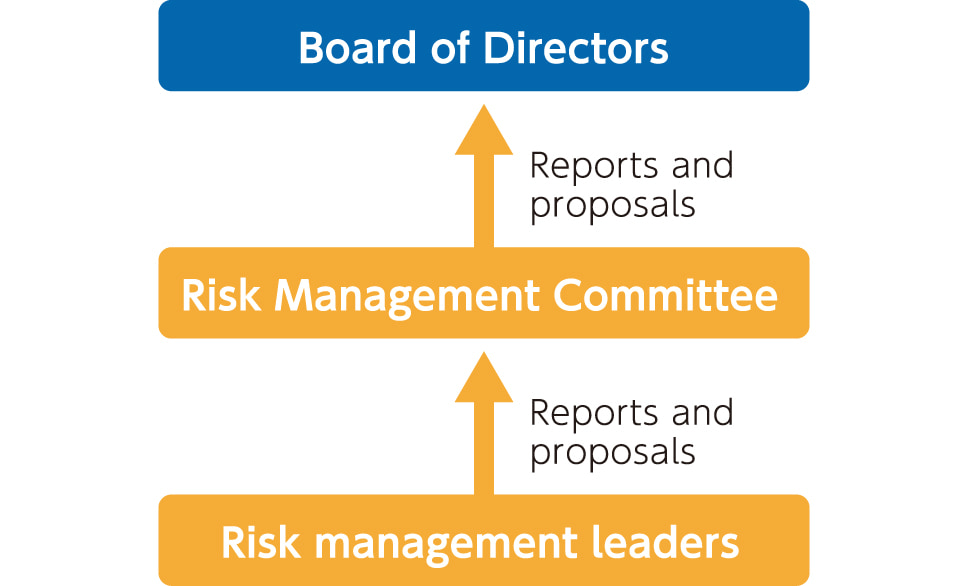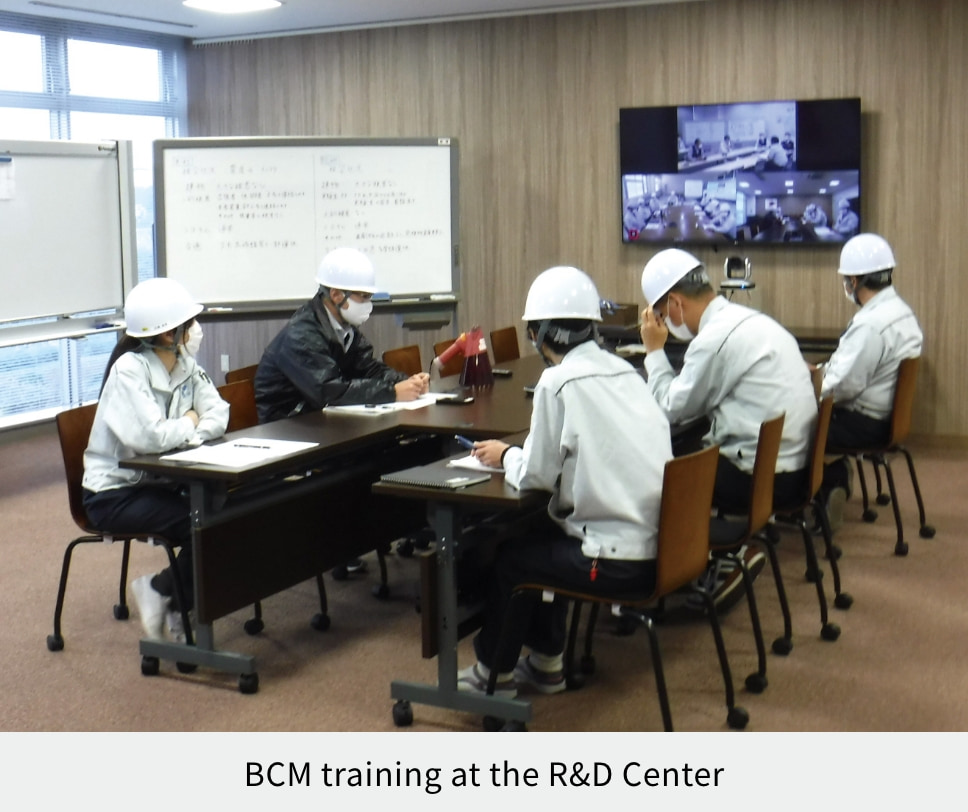Risk Management
The JCU Group understands the risks that can potentially have a significant impact on the fulfillment of our business targets and business activities, and formulates risk reduction measures based on this understanding.
In addition to establishing an internal system for preventing risks, we have made necessary preparations and conducted training to minimize damage and loss as much as possible in the event that a risk should materialize.
Risk Management Structure
The JCU Group has a Risk Management Committee chaired by the President and CEO under the Board of Directors. The Committee is made up of internal directors and a number of Executive Officers. A meeting of risk management leaders appointed by individual departments is installed under this Committee. The Risk Management Leaders Meeting examines the details of risks identified for each department, and carries out frequent and long-hour discussions based on perspectives such as risk levels and current countermeasures. The content of these discussions is promptly reported to the Management Committee which reviews the report from a management perspective to identify the risks that are ultimately key for the JCU Group, and determines the countermeasures to be taken at individual departments.
Risk management schematic

Risk management structure

Key Risks
The Risk Management Committee has identified the following risks as being the 21 key risks for our Company: management (of risk, of distribution) We will make every effort to continue to strengthen our risk management.
Risk Management Committee
- Developments in demand side industries (automotive, electronics)
- Legal regulations
- Competition with other companies, delays in new technologies development
- Material price fluctuations
- Securing and developing HR
- Fixed asset impairment accounting
- Information system failure
- Exchange rate fluctuations
- Occupational safety and health
- Tax and transfer price taxation
- Products and services
- Overseas operations
- Harassment
- Irrecoverable receivables, etc.
- Intellectual property protection and infringement
- Technical know-how leak
- Price fluctuations in held securities
- Natural disasters, accidents, communicable diseases, etc.
- Quality control system
- Risks related to management policies and strategies
- Environmental Conservation
Driving Forward Business Continuity Management (BCM)
To prepare for unforeseen events, the JCU Group has a Business Continuity Plan (BCP) in place so that we are able to continue our operations and minimize the impact on our customers even in the event of an emergency. We hold briefing sessions on our business continuity plan and distribute booklets explaining the outline of our BCP to raise awareness among employees at all business sites.
The major emergencies that our BCP prepares for include intense earthquakes, storms, floods, fires, IT failures, and supply chain disruptions.
Entering FY2022, the impact of the COVID-19 outbreak was mitigated in the form of deregulation, but sudden lockdowns and restrictions on activities were still being imposed in some regions, making for unpredictable situations.
At domestic and overseas offices, we paid close attention to the situation in each country and region, and continued to take various measures to prevent infections, such as performing disinfection, wearing masks, promoting web conferencing and, if necessary, setting restrictions on movement.
Employee safety and business continuation will continue to be the top priorities in all responses that we take at the JCU Group.
Conducting Drills

At JCU, we systematically carry out BCM drills to raise awareness among executives and employees, and to clarify their roles in the event of an emergency.
In FY2022, the R&D Center conducted a drill on setting up an emergency response headquarters. Under the scenario that a large-scale earthquake had hit, we conducted simulations on actions such as declaring the BCP into effect, confirming the safety of department employees and damage sustained by departments, and reporting to the Chief Executive of BCP Response. Through this training, we identified how each of us would operate in a contingency and what obstacles we would face.
In the event of an emergency, we set up emergency response headquarters at affected offices , and a BCP response headquarters at the head office. If this is difficult to set up at the head office, it is to be set up at an alternative office in accordance with the manual.
Introduced a Safety Confirmation System
As part of our BCP, JCU has a safety confirmation system in place that enables us to easily and quickly confirm the safety status of our employees during large-scale disasters, or nationwide/global epidemics/pandemics of communicable diseases. Multiple times a year, we conduct safety confirmation drills on an irregular basis using this system to prepare for emergencies.




